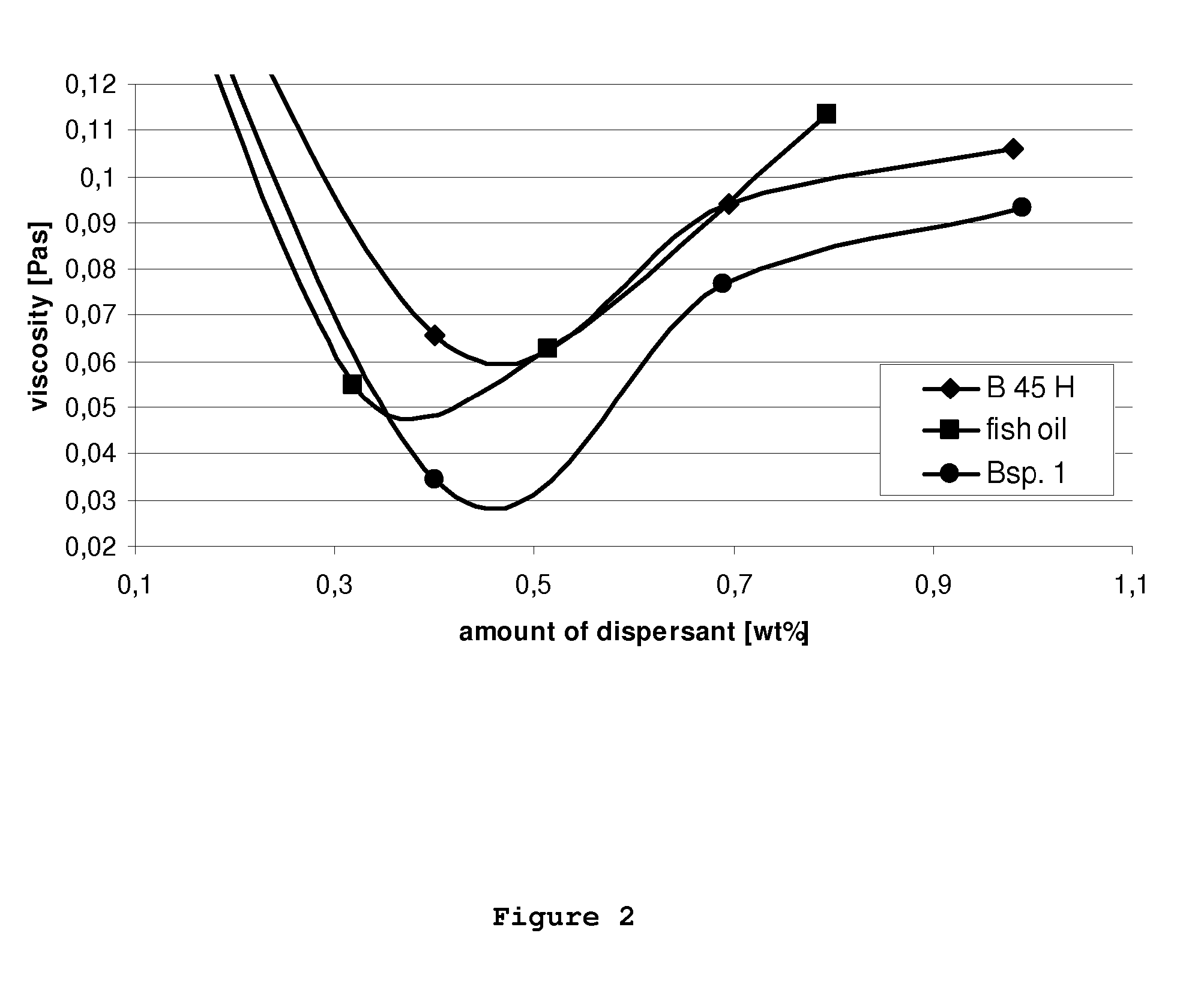Process for the production of ceramic green films with acetalized polyvinyl alcohols
a technology of acetalized polyvinyl alcohol and green film, which is applied in the direction of domestic applications, chemical/physical processes, textiles and papermaking, etc., can solve the problems of complex production of vinyl alcohol and 1-alkyl vinyl alcohol copolymers, and achieve high solid content, low viscosity of suspension, and high dispersion
- Summary
- Abstract
- Description
- Claims
- Application Information
AI Technical Summary
Benefits of technology
Problems solved by technology
Method used
Image
Examples
example 1
[0069] Binder Used:
[0070] Polyvinyl butyral according to DE 19 816 722 A1 with a degree of polymerization of approximately 800, with a polyvinyl alcohol content of 20.2% by weight, a polyvinyl acetate content of 16.1% and a viscosity determined in the Hoeppler viscosimeter of a 10% solution in ethanol at 20° C. according to DIN 53015 of 122.5 mPas.
example 2
[0071] Binder Used:
[0072] Polyvinyl butyral according to DE 19 816 722 A1 with a degree of polymerization of approximately 1100, with a polyvinyl alcohol content of 20.7% by weight, a polyvinyl acetate content of 16.2% and a viscosity determined in the Hoeppler viscosimeter of a 10% solution in ethanol at 20° C. according to DIN 53015 of 275 mPas.
example 3
[0073] Binder Used:
[0074] Polyvinyl butyral according to DE 19 816 722 A1 with a degree of polymerization of approximately 350, with a polyvinyl alcohol content of 19.6% by weight, a polyvinyl acetate content of 19.4% and a viscosity determined in the Hoeppler viscosimeter of a 10% solution in ethanol at 20° C. according to DIN 53015 of 20.8 mPas.
[0075] Further Materials Used
ComponentDescriptionSolventazeotropic toluene-ethanol mixtureDispersantMenhaden fish oil, Reichold Inc., USACeramic filleralumina A16-SG, Alcoa, USAgrain size d50: 0.35 μmspecific surface area (BET): 6.6 m2 / gPlasticiseralkyl (C7-C9) benzyl phthalate, Ferro
[0076] Evaluation of the Suspension Properties
[0077] a) Rheological Behavior of the Binder Solutions
[0078] Measuring process: For the determination of the Theological properties, solutions of 10 mass % of the PVBs respectively in the solvent mixture of ethanol / toluene were produced and homogenised for 24 hours in the tumble mixer.
[0079] The rheological c...
PUM
| Property | Measurement | Unit |
|---|---|---|
| Temperature | aaaaa | aaaaa |
| Fraction | aaaaa | aaaaa |
| Percent by mass | aaaaa | aaaaa |
Abstract
Description
Claims
Application Information
 Login to View More
Login to View More - R&D
- Intellectual Property
- Life Sciences
- Materials
- Tech Scout
- Unparalleled Data Quality
- Higher Quality Content
- 60% Fewer Hallucinations
Browse by: Latest US Patents, China's latest patents, Technical Efficacy Thesaurus, Application Domain, Technology Topic, Popular Technical Reports.
© 2025 PatSnap. All rights reserved.Legal|Privacy policy|Modern Slavery Act Transparency Statement|Sitemap|About US| Contact US: help@patsnap.com



